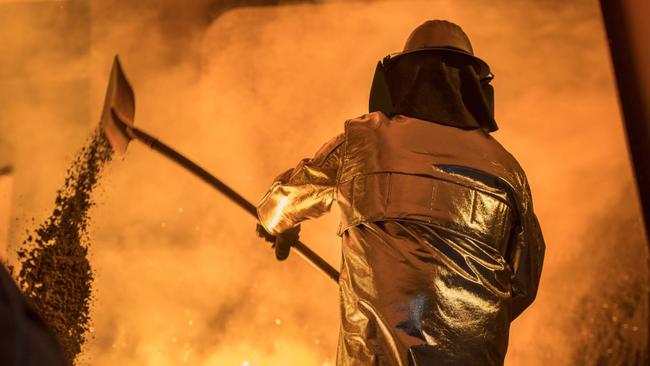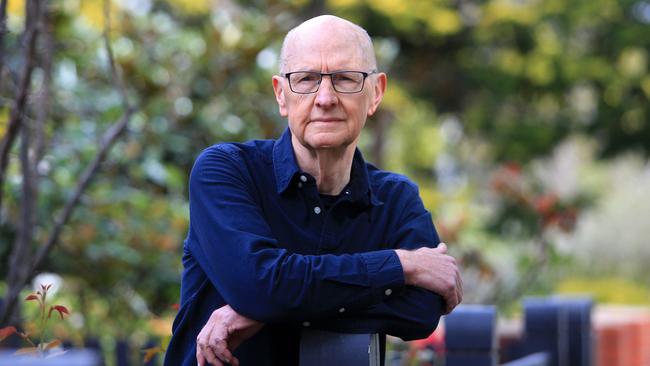
Now in 2022 he has taken a surprise step by investing his own money to buy a 9 per cent interest in a tiny resources company not listed on the ASX, Haoma, which claims it can play a significant role in slashing the costs of making “green steel”. Broomhead is not a Haoma director, but given Broomhead’s record, this investment caused with me to look more closely – first at some of the attempts to lower emissions in the conventional blast-furnace production of steel, and second, at developments in green steel.
In the 1990s Broomhead transformed the old North Broken Hill company into the lowest-cost iron ore producer in Australia. North was taken over by Rio Tinto in 2000 after a bidding war with Anglo American.
Soon after he became CEO of Orica, which he transformed into a leader in world explosives. Four years later he stepped down from Orica to successfully battle cancer.
These days he is a director of BHP (he will retire at the next annual meeting) and chairman of Orica.
As is normal practice, BHP will have approved his acquisition of 9 per cent of Haoma, but there would have been extra interest because about a decade ago BHP owned 5 per cent of Haoma.
The company is now traded on the PrimaryMarkets board and has a market capitalisation of about $60m.
Haoma owes its survival to $160m in loans from the Roy Morgan market research operation. Gary Morgan is the main shareholder in Roy Morgan Research and owns 60 per cent of the Haoma capital.

What is fascinating about Haoma and others looking to economically reduce carbon emissions in steel production is the potential value of an iron ore called goethite. Haoma has some of the largest goethite deposits in Australia that do not contain asbestos. It also has substantial reserves of high-grade magnetite iron ore.
To explain the potential importance of goethite in the future of steelmaking I need to start with the current attempts by blast-furnace steelmakers to reduce their carbon emissions and then look at the green steel projects that are being planned.
The hematite ore produced by BHP, Rio Tinto, Fortescue and Hancock has dominated global steelmaking for generations because it is very efficient in the blast furnace. But in the past decade steelmakers discovered that if they used higher-grade magnetite iron ore less coking coal was required to produce steel, lowering emissions. And so we have seen magnetite iron ore mines developed by Clive Palmer and Mineral Resources. Fortescue is involved in a magnetite joint venture operation, and Gina Rinehart is planning a magnetite mine near Port Hedland and has substantial magnetite at Mount Webber in Western Australia, plus non-asbestos goethite reserves. Haoma has a royalty arrangement on Hancock’s Mount Webber production and has adjoining leases that are also rich in non-asbestos goethite and magnetite. The Mount Webber leases were once held by Rio Tinto/CRA.
CSIRO research helped reveal that if goethite is included in the mix of materials used in conventional blast furnaces, less coking coal is required. The goethite molecules are a combination of iron, hydrogen and oxygen. The conventional steelmaking process releases the hydrogen in the goethite molecule, which reduces the need for carbon. But steel produced that way is certainly not “green steel”.
Most conventional green steel production planning involves substituting hydrogen for coal and using magnetite rather than hematite ore.
The hydrogen can come from natural gas but that limits the emissions reduction. Many are planning to use renewable electricity generation to distil water and then separate the hydrogen from the water. This is a very expensive process and the world must be prepared to pay much more for steel if that is the way of the future. It will also require big increases in magnetite iron ore production.
But a number of companies – including Sumitomo in Japan, the Rio Tinto-BlueScope research team and Haoma, in conjunction with a major university – are separately working on new ways to make “green steel”.
One of those systems is a combination of goethite, hematite and magnetite that could be smelted by a continuous flow induction furnace pipe at much lower temperatures than a conventional blast furnace. The smelting process would use gas but the carbon emissions are slashed and the costs reduced, because the process takes place at much lower temperatures and releases the hydrogen in the goethite (replacing coal), which is far more economic than making hydrogen separately.
I must emphasise that while the university working with Haoma has successfully tested components of the total process it is certainly not proven. But those advocating the potential of goethite have been greatly encouraged by its success in lowering carbon emissions in conventional steelmaking. And that encouragement is causing majors to check whether Haoma leases are for sale. Despite the risks, my guess is that on his past record Malcolm Broomhead will want to see it through, especially as the preliminary goethite processes can use hematite ore, which BHP produces, while the direct hydrogen reduction processes usually require magnetite.
Footnote: Once again the US bond market has been shown to be far more skilled than the sharemarket in predicting the actions of the Federal Reserve. As I pointed out last week, the dumping of US bonds in August correctly foreshadowed what the Federal Reserve would say at Jackson Hole over the weekend. The sharemarket is now forced to catch up, which will see nasty falls. Keep watching the US bond market.


Few people in the Australian resources industry have a better reputation than Malcolm Broomhead. In the 1990s not only did he show how Australia could be the lowest-cost iron ore miner in the world but in 2001 he transformed a struggling Orica into a global leader in mining explosives.